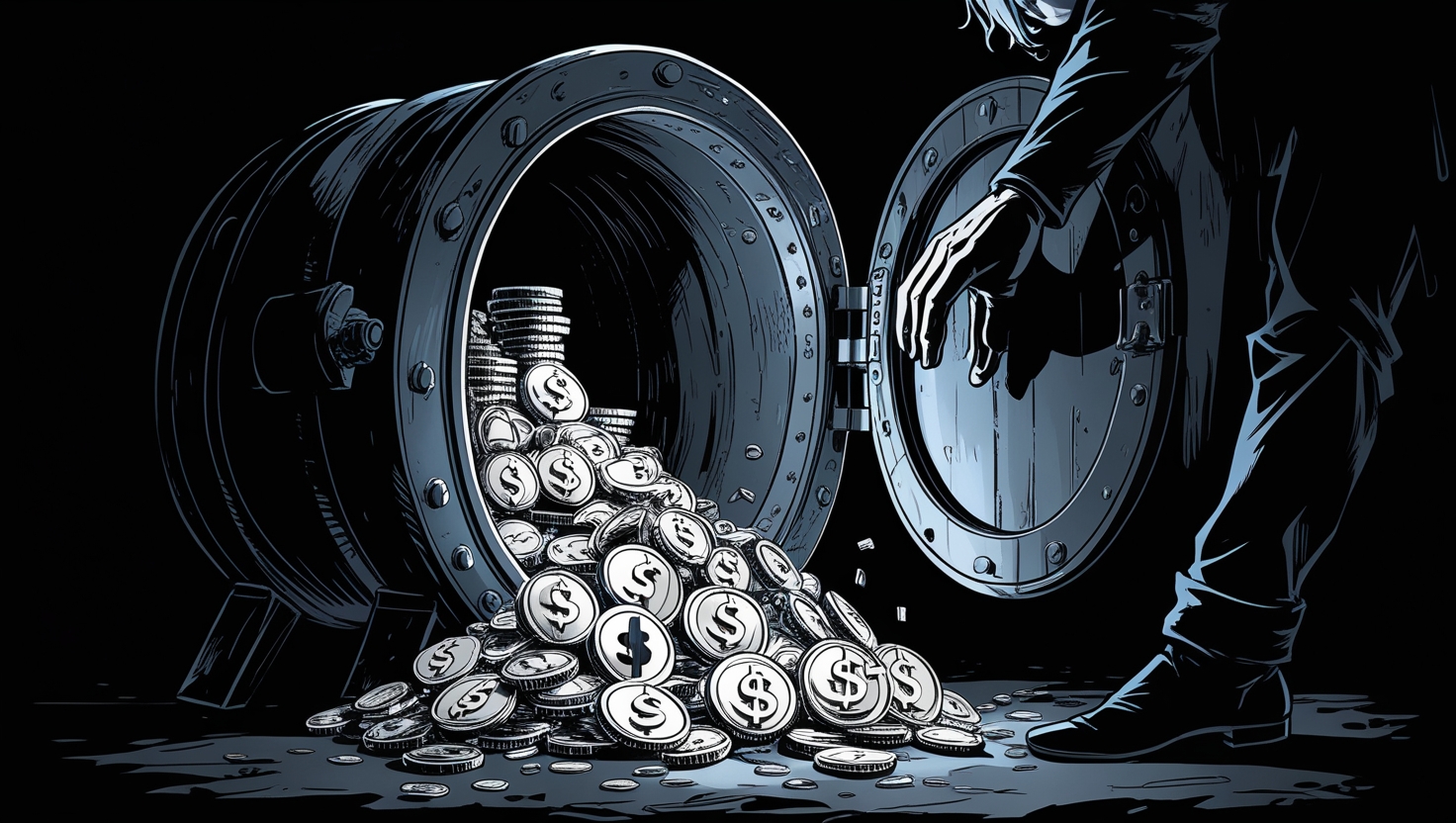Have you ever wondered, “can you make money from YouTube?” If you’re a creator with a passion for video creation or simply someone exploring new ways to earn revenue online, you’re in the right place. Today, we’re diving into innovative monetization strategies that go beyond the usual ad revenues, focusing on niche channels, creative revenue streams, and even the impact of the new 2025 intellectual property laws on YouTube earnings.

Innovative Monetization Strategies Beyond the Traditional
While many creators rely solely on ad revenue and sponsorships, the landscape of earning money on YouTube is evolving dramatically. Instead of sticking to well-trodden paths like the YouTube Partner Program (YPP), forward-thinking creators are exploring unique revenue models. For example, some channels now offer exclusive premium content through YouTube Premium, charge subscriptions for behind-the-scenes access, or even integrate with Web3 platforms such as Rally.io to tokenize fan engagement. These approaches not only diversify income streams but also reduce dependency on traditional ad revenue, making channels more resilient in a rapidly shifting digital world.
Have you ever considered how selling exclusive access to educational videos or hosting live interactive sessions can create value for your audience? Channels like Primitive Technology have leveraged diverse models by monetizing indirect sources such as books and documentaries, while others like Yes Theory combine sponsorships with experiential tours. These innovative techniques demonstrate that if you’re willing to think outside the box, you can indeed generate income on YouTube without solely relying on conventional methods.
Creative Indie Approaches to Monetization
For creatives who’d like to break free from the spotlight of traditional sponsorships, other independent monetization strategies offer a fascinating alternative. Think of offering bespoke courses or exclusive content on niche topics, for instance, coding, creative writing, or expert-level educational issues. Think of offering your most loyal fans access to top-end webinars or live Q&A sessions designed specifically for them. This revolution is especially appealing in today’s digital landscape, where customers don’t simply anticipate free content—but are actually willing to pay for richer, more meaningful experiences.
Most content creators are now linking their channels with platforms that support decentralized patronage. By partnering with Web3 platforms, they can tokenize content, reward loyal fans, and even offer fractional ownership of exclusive projects. This disallows the traditional context around “can you monetize YouTube” and brings together old-school video content and cutting-edge cryptocurrency and blockchain technology. The benefits are greater engagement, diversified revenue streams, and a community-driven strategy for growth.
Traditional Versus Innovative Revenue Models on YouTube
Overview of Traditional YouTube Monetization Strategies
Traditionally, YouTube creators have relied on ad revenue, affiliate marketing, and sponsorships to earn money. The YouTube Partner Program (YPP) has been the cornerstone of this model, providing creators with an opportunity to monetize their content based on views and engagement. However, with increasing competition and frequent changes to the platform’s algorithms, relying solely on these methods may not be sustainable for everyone.
Innovative Tips for Niche Channels
On the other hand, niche channels can benefit from adopting alternative revenue models that emphasize creativity and community involvement. Modern techniques include offering exclusive memberships, selling merchandise linked to your video content, or even integrating interactive advertising experiences that immerse the viewer. Instead of asking, “can you make money from YouTube” by following the beaten path, these niche channels reimagine revenue generation by focusing on direct audience engagement and value-based content.
| Revenue Model | Traditional Approach | Innovative Approach |
|---|---|---|
| YouTube Partner Program | Ad revenue based on views | Subscription-based premium content |
| Sponsorships | Brand deals and product placements | Community-driven sponsorships and experiential tours |
| Affiliate Marketing | Link-based commission earnings | Interactive product integrations and tokenized rewards |
This table summarizes the contrast between traditional and innovative approaches. Each method has its own pros and cons, but by diversifying your revenue streams, you stand a better chance of long-term success.
Impact of the New 2025 Copyright Laws on YouTube Earnings
The digital landscape is constantly evolving, and one of the most significant changes anticipated is the new copyright and intellectual property laws coming into effect in 2025. These new regulations could potentially reshape how revenue is generated on YouTube, especially for channels that rely on interactive content formats like pay-per-view or “money-in-hole” segments. How will these laws affect your ability to monetize? Resources such as industry insights from reputable sources like Forbes suggest that creators must be more vigilant in understanding how their content is shared and monetized.
For instance, interactive content that allows viewers to pay for in-video choices or exclusive segments might face new compliance requirements. The benefits, however, could include enhanced trust from a community that values transparency and rights management. Creators who adapt quickly by learning these new guidelines will likely find a competitive edge in a market that prizes innovation and high-quality content.
| Content Type | Traditional Earnings | Interactive Earnings |
|---|---|---|
| Standard Videos | Ad revenue, sponsorships | Enhanced viewer interaction fees |
| Interactive Content | Limited by ad policies | Potential for microtransactions and dynamic monetization |
| Exclusive Content | Memberships, paid promotions | Tiered payment systems with added features |
This comparison illustrates how interactive earnings might offer more personalized revenue opportunities, especially in a post-2025 regulatory environment. By staying informed, creators can pivot their business models to maximize income while complying with new guidelines.
How to Start Making Money on YouTube
If you’re asking yourself, “can you make money on YouTube?” the answer is definitely yes—if you’re prepared to diversify your income channels and think outside the box. To begin, first build a solid content approach that resonates with a voracious audience. This means building quality content, engaging with your viewers, and leveraging niche topics that have a devoted following. Along with these strategies, consider adding new sources of revenue such as:
Exclusivity Content Deliverables: Offer a subscription program through which members gain access to exclusive behind-the-scenes content, early drops, or live streams. This approach works particularly well if you have proprietary information or know-how that your audience values.
Web3 Platform Integrations: You might want to integrate with decentralized platforms like Rally.io. These integrations allow you to token your content so that dedicated viewers can invest in your creative work and receive special rewards in return. Such integrations have the potential to generate a stable income source regardless of the normal ad revenue.
Educational and Tutorials: If you are a specialist in a niche, consider creating a series of educational tutorials or videos. You can market them on online study websites or even as paid courses. This model not only addresses a niche market but also builds long-term trust and credibility with your audience.
Another key component is learning the fundamentals of monetization through the YouTube Partner Program. Although creating other streams of revenue is key, the YPP remains significant, particularly for beginners. You require at least 1,000 subscribers and 4,000 hours watched within the last 12 months, in addition to following YouTube’s community guidelines. But be sure not to put all your eggs in one basket; diversify, diversify, diversify.
For additional insights specifically on how to leverage YouTube Shorts for income, check out our detailed guide on make money on youtube shorts. This resource offers strategies that seamlessly blend traditional and innovative monetization models.
The Role of Community Engagement and Experimentation
It’s not just about content production—engaging with your audience is equally significant. Directly interacting with viewers through live streams, social media, and community posts can build loyalty that transforms passive viewers into active supporters. Have you ever asked your audience for feedback, or wondered which content formats resonate the most? Experimentation is the name of the game. Periodically assess which videos generate the most engagement and adjust your monetization strategies accordingly.
When you invest in building a strong community, your revenue potential increases. Loyal fans are more likely to participate in exclusive memberships, purchase merchandise, or even invest in token-based initiatives. This two-way engagement creates a symbiotic relationship where your creative success directly contributes to your financial rewards.

Looking Ahead: Future Trends in YouTube Monetization
As we move forward, the digital ecosystem continues evolving. Future trends in monetizing your channel may lean even more towards personalized viewer experiences, advanced interactive features, and integration with emerging technologies like augmented reality (AR) and virtual reality (VR). Imagine a YouTube channel where viewers can virtually attend live events or interact with 3D models during a tutorial—this is not science fiction but a glimpse into the near future of digital content monetization.
Creators who embrace these novel ideas will likely lead the pack in revenue generation. The key takeaway here is that while the question remains, “can you make money from YouTube?” the answer largely depends on your willingness to innovate and evolve. By balancing traditional monetization with fresh, creative approaches, you set yourself up for success in a competitive and dynamic marketplace.
Have these insights answered your question of “can you make money from YouTube?” Creativity and a willingness to explore diverse revenue streams are your most valuable tools. Dive in, experiment, and remember—the digital world is an ever-evolving ecosystem where your unique approach can set you apart from the rest.
Is experimenting with alternative revenue models risky?
Experimenting with new monetization models always carries some risk, but diversification is key to sustaining long-term growth. By testing innovative strategies alongside traditional monetization methods, you can identify which models resonate best with your audience and adjust your approach accordingly. Being adaptable and willing to innovate is crucial to staying ahead in the competitive YouTube landscape.
How will the new 2025 copyright laws affect YouTube earnings?
The upcoming 2025 copyright and intellectual property regulations may change the way revenue is generated on YouTube. These laws are expected to impact interactive content formats and require more stringent rights management. Creators who adapt by offering innovative and compliance-friendly content—like exclusive, interactive experiences—could benefit from enhanced trust and improved revenue opportunities while meeting the new standards.
Are there innovative monetization strategies besides ads and sponsorships?
Yes, aside from traditional ads and sponsorships, creators can earn money through ways like offering premium content on subscription models, partnering with decentralized platforms (e.g., Rally.io), hosting exclusive educational sessions, and launching interactive or member-only content. These approaches provide a diversified income stream that reduces reliance on traditional revenue sources.
